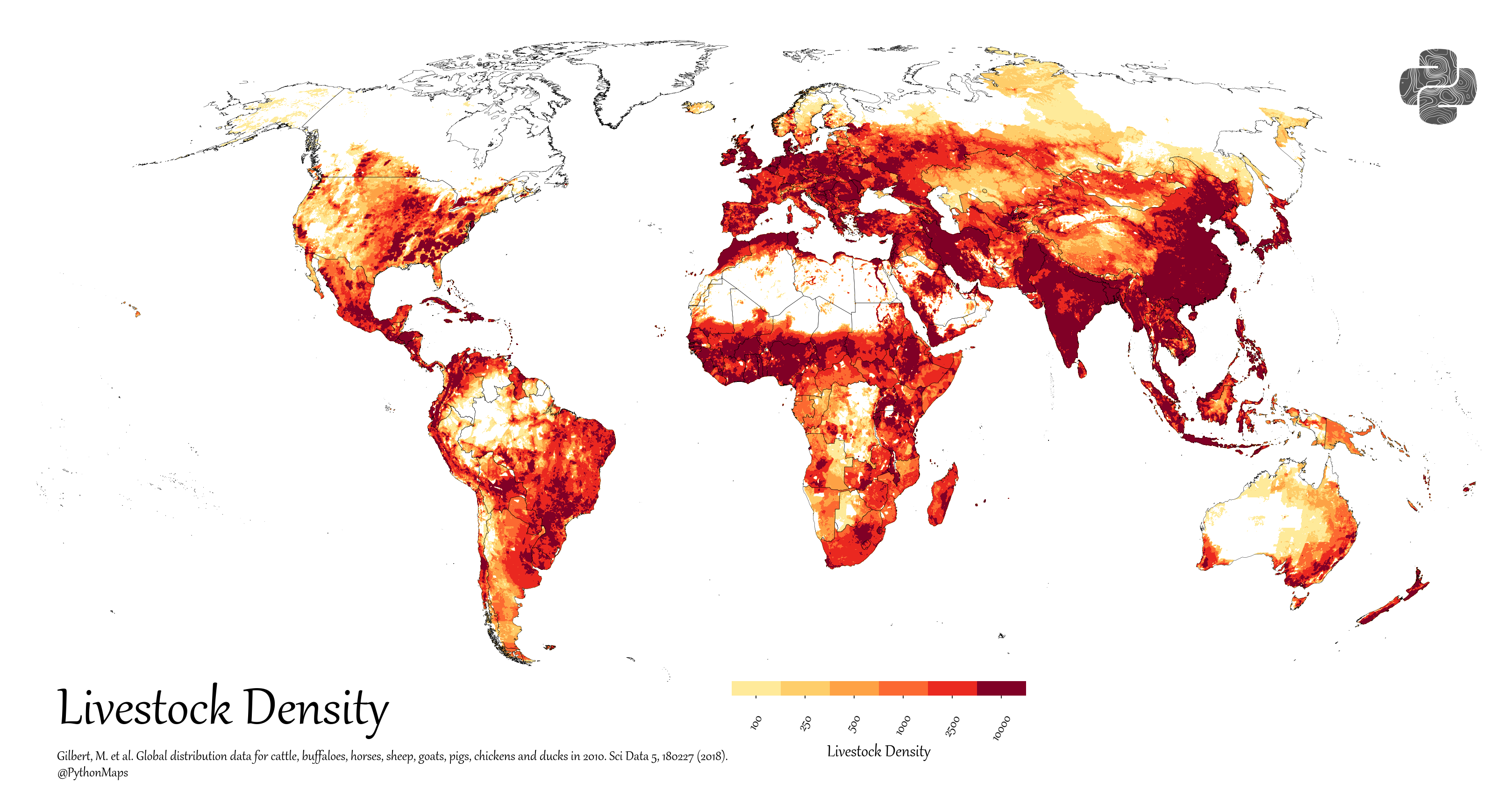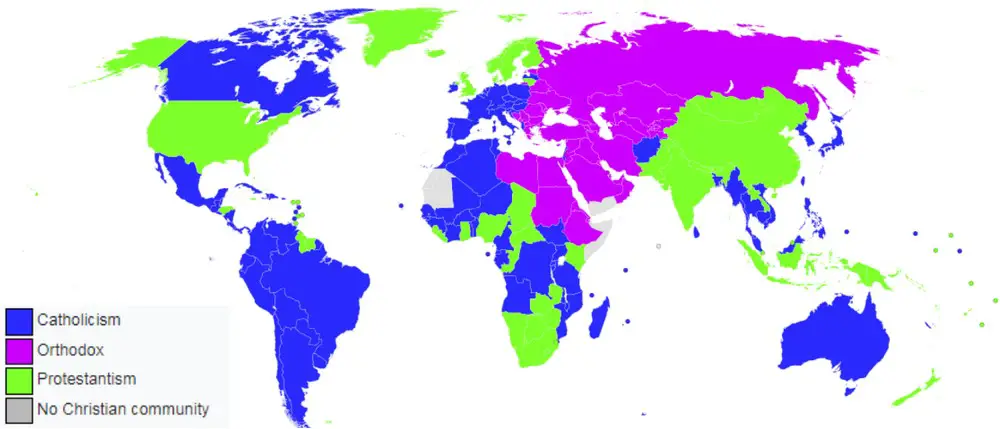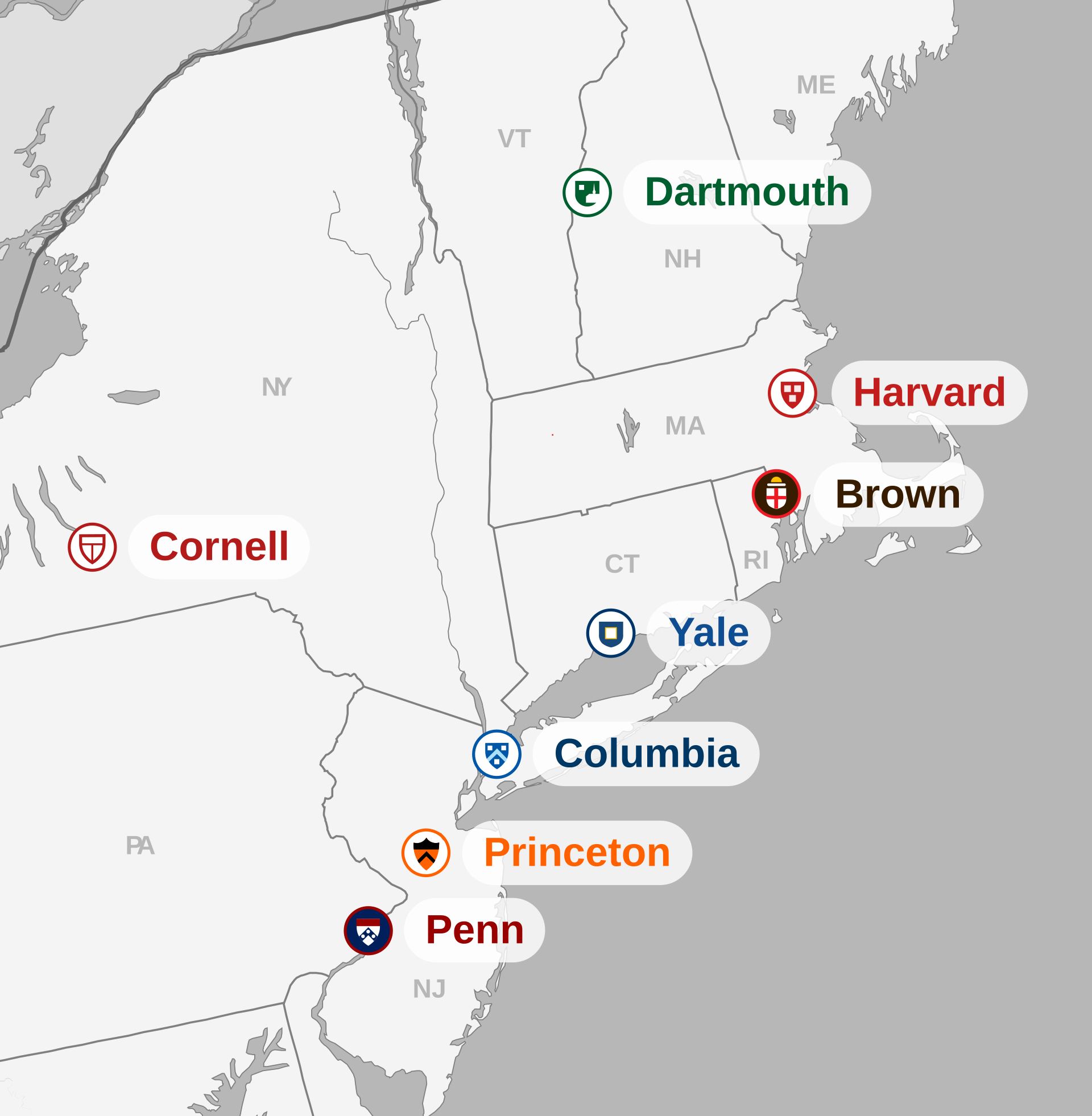The Christian Landscape of Modern Europe
Europe’s religious landscape has seen remarkable changes over the past century. In 1900, nearly 95% of Europe’s population professed some form of Christianity. Today, according to Gordon University research, that number stands at 76% – a significant shift that reflects broader changes in European society.
While Russia leads as Europe’s largest Christian nation by population, followed by Germany and Italy, the distribution and denomination of Christians across the continent tells a fascinating story of history, culture, and migration.
Table of Contents
Percentage of Christians in Europe
The map below reveals the varying density of Christian populations across European nations, painting a picture of how historical events and modern trends have shaped religious demographics.

Catholics in Europe
Catholicism remains Europe’s largest Christian denomination, representing 47% of European Christians. This dominance traces back to Rome’s historical influence and the strength of medieval Catholic kingdoms.
From the devout populations of Poland and Ireland to the more secular approach in France, Catholic influence varies dramatically across the continent. The following map shows where Catholic populations are most concentrated.
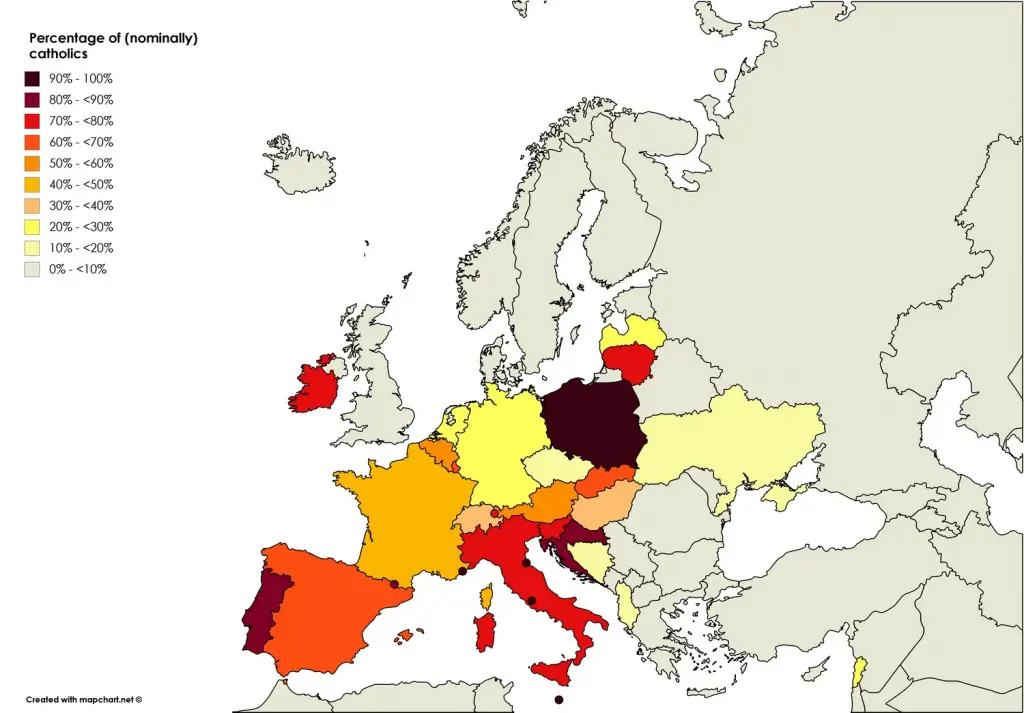
Orthodox Christians in Europe
Orthodox Christianity, accounting for 33% of European Christians, forms a significant presence particularly in Eastern Europe. This distribution closely follows the historical influence of the Byzantine Empire and subsequent Orthodox kingdoms.
Countries like Greece, Russia, and Romania showcase particularly strong Orthodox traditions, reflecting centuries of cultural development.
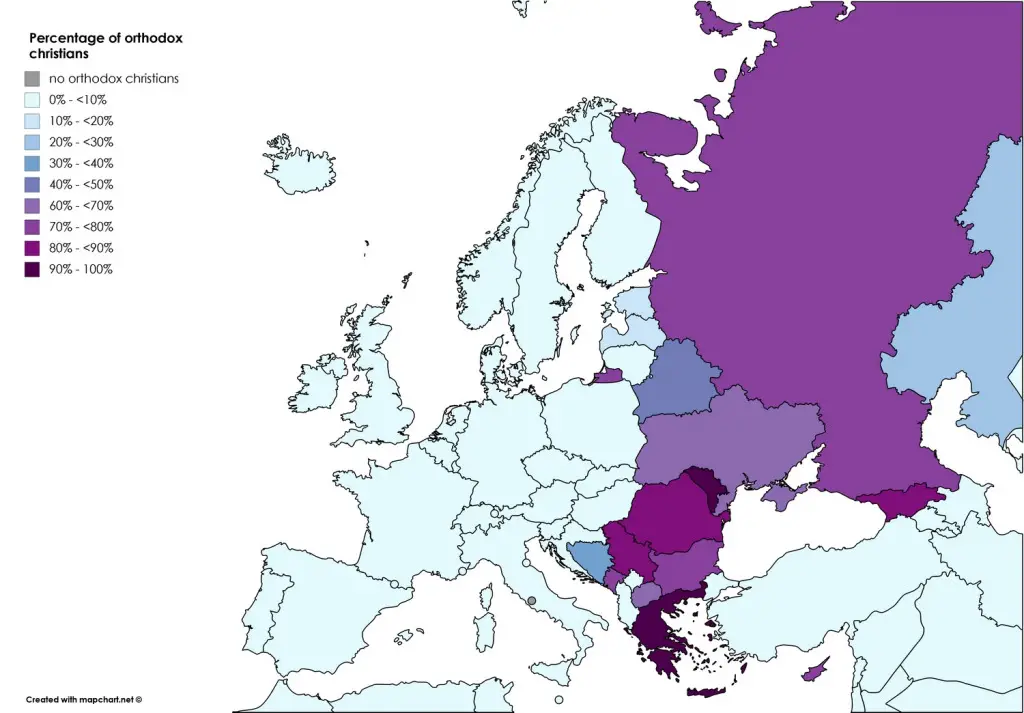
Protestants in Europe
Protestant Christians, making up 19% of European Christians, show strong presence in northern European countries. This pattern reflects the enduring impact of the 16th-century Reformation movement.
The map of Europe below shows Protestant concentrations across Europe, with notable strongholds in Scandinavian countries and parts of Germany.
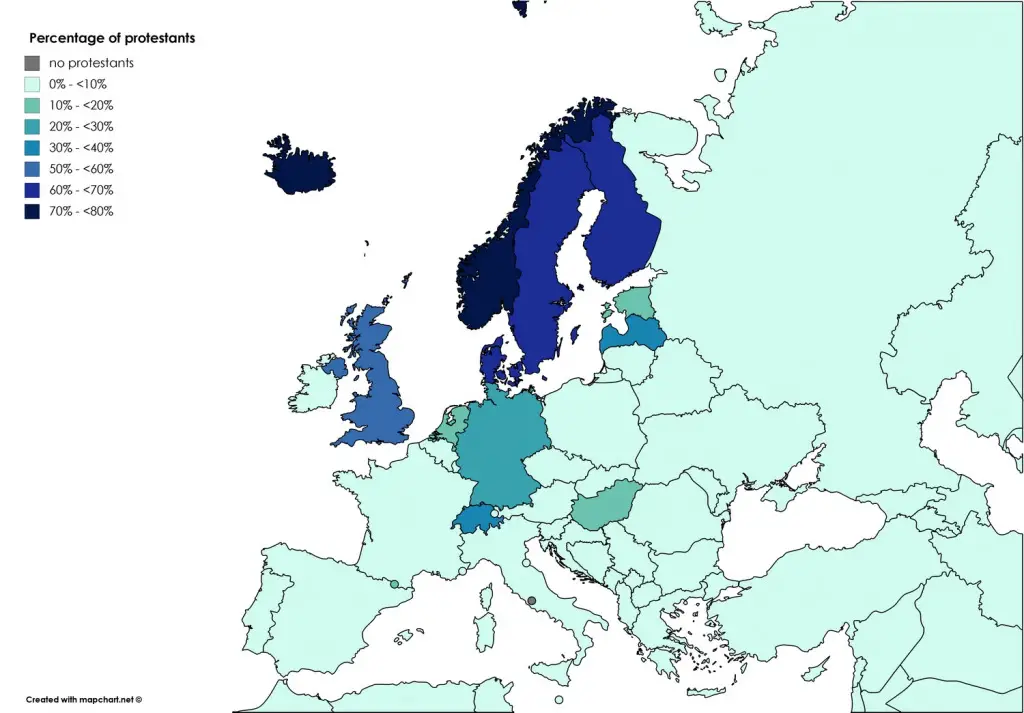
These patterns don’t just reflect religious preferences – they tell the story of Europe’s historical development, from ancient Rome to the modern day. They help explain cultural differences, political alignments, and even architectural styles across the continent.
What patterns do you notice in these maps? Share your observations in the comments below!



